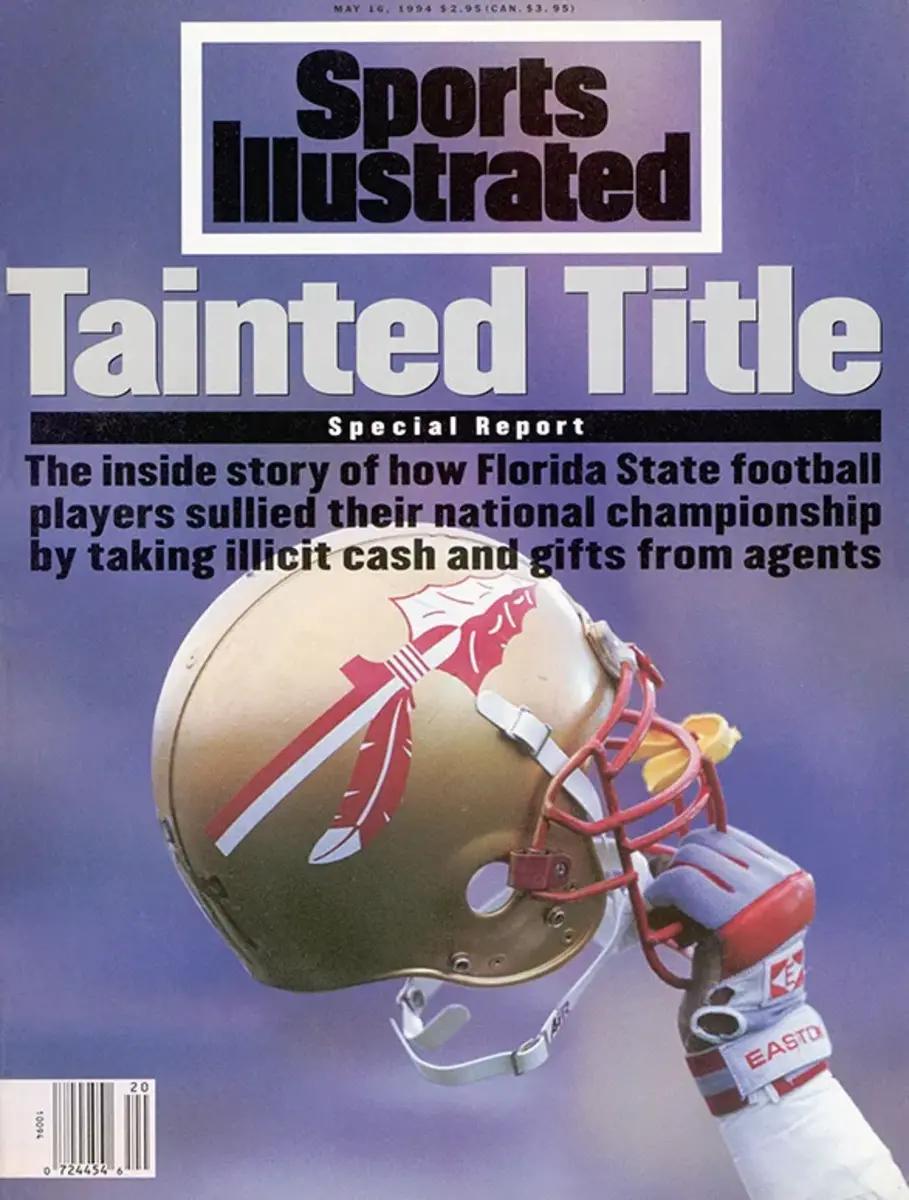SI:AM | Luka and the Mavs Humiliated the Suns
Good morning, I’m Dan Gartland. At least the hockey games were better than the NBA blowouts.
In today’s SI:AM:
🏀 Luka Dončić matched the Suns’ first half by himself
📉 The Reds are going from bad to worse
So much for Game 7s
Everyone always says that the best two words in sports are “Game 7.” Well, not yesterday in the NBA. Both do-or-die games in the conference semifinals were laughers—especially the nightcap.
The Celtics won the first game of the day, beating the Bucks 109–81, behind a heroic 27-point performance from Grant Williams. At least that game was close for a while, though. The Suns, on the other hand, got downright embarrassed by the Mavs. The 123–90 final score doesn’t do it justice. Dallas raced out to a 57–27 halftime lead as Luka Dončić scored as many points as the entire Phoenix team. By the end of the third quarter, the lead had ballooned to 92–50. It was a shocking result for a Suns team that was supposed to be among the title favorites, as Rohan Nadkarni writes:
“Phoenix’s season—which before the playoffs had been the best in franchise history—ended in shocking, confusing, humiliating fashion on Sunday night. The Suns were pummeled in a 123–90 loss. It still doesn’t feel completely real. It wasn’t supposed to go this way. Didn’t Dončić still need more playoff seasoning before he could make the Finals? Wasn’t this supposed to be the storybook finish that had long eluded Chris Paul? Weren’t the Suns far and away the best team in the NBA? Dallas put all those questions to bed mercilessly and with brutality in what was a landscape-changing win for the league.”
These playoffs have been a breakout moment for Dončić. His prowess as an elite versatile point forward has been clear since his first All-Star season in 2019–20, but he had never led the Mavs to a playoff series win before this year. He averaged a ridiculous 35.7 points per game last postseason, but Dallas lost in seven games to the Jazz. Now, with a different supporting cast around him, the Mavs are four wins away from their first Finals appearance since ’11.
One of the leading men in that supporting cast is Spencer Dinwiddie, who the Mavericks acquired in exchange for Kristaps Porziņģis at the deadline in what Rohan called at the time “a curious trade for Dallas.” It might not have seemed smart at the time (Rohan graded the deal as a C+ for the Mavs), but it looks brilliant in retrospect. Dinwiddie scored 30 points in 25 minutes off the bench last night.
Still, the Mavericks’ success begins and ends with Dončić. Whether he’s scoring or facilitating, the Dallas offense depends on him to make things happen. Guys like Dinwiddie and Jalen Brunson (who scored 24 in Game 7, making him the only other Dallas player with more than six points) can take the pressure off Dončić, but if the Mavs are going to beat the Warriors, they need Dončić to continue playing as well as he has been. But will he be able to keep it up while facing the Warriors’ wing defenders?
These games were not snoozers
I’ve always believed that Game 7s in hockey are much more exciting than Game 7s in basketball, and I was proved right yesterday.
Madison Square Garden was bumping for Game 7 between the Rangers and Penguins, although the mood was tense before Mika Zibanejad scored with 5:45 left in regulation to bring the home team level at 3–3. That led to one of the most thrilling scenarios in sports: sudden-death overtime in Game 7. Artemi Panarin scored the series-winning goal for New York less than five minutes into the extra period. The Rangers will now face the Hurricanes in the next round.
The other Game 7 also featured a Dallas player putting the team on his back and also went to overtime. Stars goalie Jake Oettinger faced a barrage of shots—67 in total—but let only three past him. Unfortunately, the third goal he allowed was Johnny Gaudreau’s overtime winner for the Flames. That sets up an all-Alberta second-round matchup between Calgary and the Oilers.
The best of Sports Illustrated

Today is the launch of this year’s SI Swimsuit issue, and here are the four cover models. … Stephanie Apstein wrote about how historically awful the Reds’ season has been before it got even worse this weekend. … Liverpool’s dream of a quadruple is still alive after prevailing on penalties to win the FA Cup over Chelsea, Jonathan Wilson writes. … Terquavion Smith, Keon Ellis and Tyrese Martin are some of the under-the-radar prospects Jeremy Woo is watching during the NBA draft process.
Around the sports world
The Reds’ lousy season got even worse yesterday, when they lost despite not allowing a hit. … Tiger Woods told reporters at the PGA Championship that he has “gotten a lot stronger” since the Masters. … Drew Brees is reportedly done with NBC after just one season as an NFL analyst. … Thirteen years after leaving Davidson for the NBA, Stephen Curry has completed his degree and graduated. … Former NFL running back Frank Gore won his professional boxing debut with a brutal knockout punch. … Amar’e Stoudemire quit his assistant coaching job with the Nets and called out Kyrie Irving for choosing to skip half of the season.
The top five...
… things I saw yesterday:
5. Luka Dončić’s crossover on Cam Johnson
4. This supercut of Shohei Ohtani’s first 100 homers
3. Jake Guentzel’s hand-eye coordination on this goal
2. Sam Rosen’s call of Artemi Panarin’s goal on the Rangers’ home TV broadcast
1. Albert Pujols pitching for the Cardinals
SIQ
On this day in 1957, a fight at the Copacabana nightclub led the Yankees to trade which player?
Friday’s SIQ: How many batters did Ron Necciai strike out during his nine-inning no-hitter on May 13, 1952?
Answer: 27. Pitching for the Pirates’ Class D affiliate, the Bristol Twins, Necciai recorded every single out of his no-hitter against the Welch Miners by strikeout.
Necciai allowed four base runners on the night, one via walk, one on a hit-by-pitch and one who reached first after a dropped third strike. It was that dropped third strike that allowed Necciai to reach the fabled 27-K benchmark. He had gotten one batter to ground out in the second inning, but everyone else had been retired via the strikeout. Necciai entered the ninth inning with 23 strikeouts, within shouting distance of the pro record of 25 set by a career minor leaguer named Hooks Iott in 1941 and with 27 still not out of the question. Everyone in the ballpark knew what was going on. When the first batter in the ninth popped one up behind the plate, first baseman Phil Filiatrault reportedly told catcher Harry Dunlop to let it fall. He did, and Necciai struck the guy out. (Dunlop and Necciai later said the ball had simply gotten lost in the dim stadium lights.)
Necciai got the next guy to strike out, giving him 25 with two outs in the ninth. Here’s how Warren Corbett described what happened next in Necciai’s SABR biography:
“With two away, Welch center fielder Billy Hammond became the record-breaking No. 26, flailing at a curve that bounced on the plate. But the ball got past Dunlop for a wild pitch that skittered to the backstop while Hammond raced to first, Welch’s fourth base runner.
“Another conspiracy theory: Some of the players believed Dunlop had let it get by him to give Necciai a chance at 27. The catcher said no way: ‘He had a great curveball, an old fashioned drop. A lot of them dropped in the dirt. He wasn’t easy to handle.’ That Sandy Koufax curve, the 12-to-6 knee-buckler, was what made him so dominant. Inexperienced hitters had never seen anything like it.”
Necciai capitalized on the opportunity afforded to him by the passed ball and retired one more guy with his 27th strikeout of the game.
Necciai was only 19 at the time and beginning his third season as a pro. The Western Pennsylvania native had been signed by the Pirates as a first baseman but was quickly converted to a pitcher after coaches noticed his strong arm. He mowed down hitters with ease but struggled with his control. He was called up to the majors in August 1952 but recorded a 7.08 ERA in 12 appearances.
Part of Necciai’s problem was chronic ulcers. Even during his 27-strikeout game, he was taking pills and drinking milk on the mound to try to cure his upset stomach. Unable to eat much, he lost weight rapidly and grew weak. He injured his shoulder while trying to get ready for the 1953 season and never pitched in the big leagues again.
Necciai retired and got into the sporting goods business. He’s still alive today (he’ll turn 90 next month) and living in Florida. He spoke with MLB.com last year about his famous game and said he’s surprised people still talk about him.
“I still get cards, letters and pictures to sign,” Necciai said. “Yeah, surprisingly. It’s unbelievable. I haven’t played in 70 years.”
From the Vault: May 16, 1994

If you want to understand how much college sports have changed in the past 30 years, you don’t have to look much further than this cover.
The tone it takes makes you think that Florida State committed far graver sins than what is alleged in Sonja Steptoe’s article. The “scandal” referenced in the headline is that at least seven FSU football players went to a Foot Locker and bought, cumulatively, about $6,000 worth of shoes and clothing. Players also allegedly received a total of $10,000 in cash payments—peanuts compared to what their contemporaries are earning under name, image and likeness deals, but a massive scandal at the time:
“The most brazen episode was a midseason, two-handed, shelf-clearing, 90-minute shopping spree by members of the Florida State team that would go on to win college football's national championship. Running shoes galore. Team jackets of all colors. Dozens of hats, T-shirts, shorts and gloves. Winter coats that the players could wear to South Bend for the big game against the Fighting Irish. Some $6,000 worth of merchandise in all, armloads and armloads, large cartons crammed full, every item purchased on the credit card of Raul Bey, a Las Vegas businessman who was in a loose partnership with a street agent named Nate Cebrun.”
Because it was 1993, Cebrun couldn’t slide into the Instagram DMs of players. He arrived in Tallahassee and stayed at the home of a local woman who took him around campus, where he tried to meet football players:
“During his first night in Tallahassee, he asked [Meirley] Lockhart to drive him to the dorm. While she sat in the car, Cebrun went into the dorm to try to meet players. He had no luck.
“The next day Cebrun, undeterred, asked Lockhart if she knew anyone who might be acquainted with some of the Seminole players. Lockhart immediately thought of [Paul] Williams, the son of a friend of hers who is a minister. The 30-year-old Williams was a part-time coach for Florida A&M University High School in ’93 and before that had coached at Tallahassee’s Rickards High. Lockhart called Williams, and he agreed to introduce Cebrun to Florida State players.”
That got the ball rolling. Through Williams, Cebrun met several Seminoles and began trying to woo them with impermissible benefits, hoping to ultimately steer them toward signing with certain agents. Some took him up on the offer. Others, like Heisman-winning quarterback Charlie Ward, turned him down.
Cebrun seems like an interesting character. He called himself “Coach Nate” and passed himself off as a close associate of UNLV basketball coach Jerry Tarkanian, even though he was never a coach at UNLV, and Steptoe’s article alludes to the fact that the championship ring Cebrun said Tarkanian gave him may have been a fake (replicas with fake stones were sold in stores):
“His black-and-gold business card reads COACH NATE CEBRUN: PLAYER RELATIONS. He is smooth-talking and charming, 6'3", 270 to 280 pounds, gruff-voiced and big-bellied—outsized in every way. He wears two size-15 rings on his massive hands, one from the University of Nebraska, where he played freshman basketball, the other from UNLV. The UNLV ring has a diamond-or rhine-stone-studded number 1 set into its red stone face. It reads COACH NATE on one side and UNLV 103, DUKE 73 on the other.”
That sounds like the perfect kind of guy to navigate the sleazy world of early-1990s illicit contact between athletes and agents.
While what Cebrun is alleged to have done wouldn’t cause ripples today, it was a serious scandal back then—and illegal. He spent 30 days in jail for his alleged role in the Foot Locker shopping spree and was arrested again in 2000 for reportedly providing $2,500 in cash to an Auburn basketball player.
Check out more of SI’s archives and historic images at vault.si.com.
Sports Illustrated may receive compensation for some links to products and services on this website.
